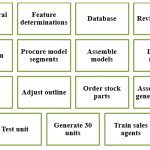Differences between the four strategic dispositions
Differences between the four strategic dispositions
Describe the differences between the four strategic dispositions. What is the principle advantage of each disposition?
The four strategic arrangements are ethnocentric, polycentric, regiocentric and geocentric. Ethnocentric allows the values and interests of the parent company to guide strategic decisions. “There are many costs that ethnocentrism can incur in an international organization. Using the centralized approach can cause inefficient staffing problems in the organization, this is because the staff employed will incur high financial costs for the global business, since they have That pay the costs of transferring personnel from the country of origin abroad.Policycenters make strategic decisions adapted to the cultures of the countries where the MNC operates.A polycentric approach “gives rise to problems of coordination and control.” Normally, The administration loses the coordination of its international affiliates because they are forced to operate independently of each other and establish separate objectives and plans that meet the criteria of host countries (Lane & Maznevski, nd). Organizes country by country and marketing research is done independently in each country. ” Regiocentric leads a company to try to combine its own interests with those of its subsidiaries on a regional basis. Geocentric tries to integrate a global systems approach to decision making. According to international contracting, managers operate relatively independently in the region, usually do not move to the headquarters of the company. The company and product strategies are adaptable in this approach. When regional experience is needed, the natives of the region are hired. If knowledge of the product is crucial, then nationals of countries of origin, who have easy access to corporate sources of information, can be brought in. ” (Luthans & Doh, 2012)





